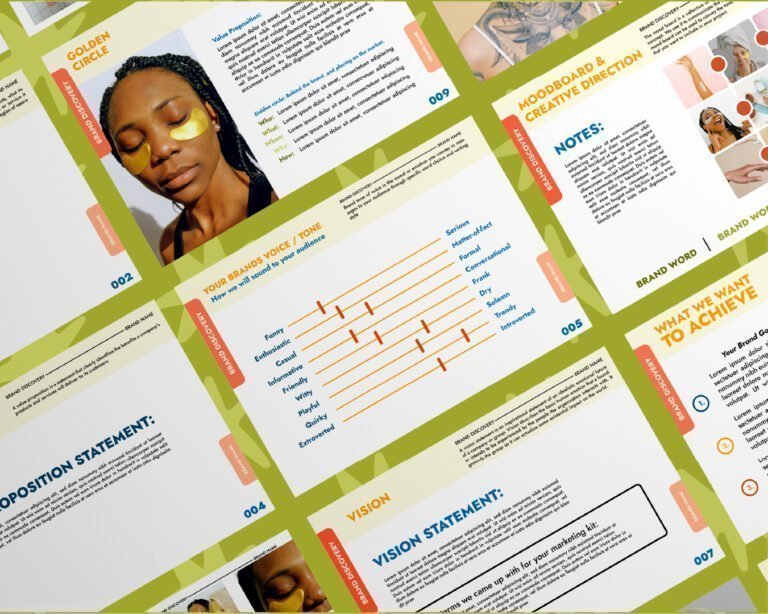-
Incorporating Video Transcripts and Structured Data for SEO Gains
-
Effective Keyword Research and Optimization for Video Content
-
Strategies for Maximizing Video Thumbnail Impact and CTA Usage
Diving straight into the digital realm, where video content reigns supreme, mastering SEO for video content is no longer just an option—it’s a must. While traditional text-based SEO tactics are well-known, the rules of engagement change when we shift focus to videos. It’s like stepping into a new game with different strategies and a new plan to score and improve your ranking. Harnessing keywords related to your visual stories ensures they don’t just float in the vast sea of online media but actually reach and resonate with your audience.
In this era where everyone has a camera in their pocket, creating videos is easy; getting them seen is another story. Let’s cut through the noise together as we explore actionable tips that will elevate your YouTube videos from invisible to unmissable on search engine results pages, using rich snippets, target keywords, and links.
Key Takeaways
- Grasp the basics of Video SEO by ensuring your content is discoverable and ranks well on search engines, which will ultimately drive more traffic to your videos.
- Follow Video SEO Best Practices, such as using relevant keywords and optimizing video titles, descriptions, and tags to enhance search visibility.
- Optimize your videos not just for search engines but also for user engagement by creating high-quality, valuable content that resonates with your audience.
- Utilize YouTube’s unique features and build channel authority to leverage the platform’s SEO benefits, making your content more likely to be recommended to viewers.
- Incorporate transcripts and structured data into your video content to provide more context for search engines, leading to better indexing and increased accessibility.
- Stay ahead of the curve by keeping up with evolving trends in Video SEO to ensure your content remains relevant and continues to perform well in search results.
Understanding the Fundamentals of Video SEO
Modern Importance
Video content has become a key player in digital marketing. It’s not just about making videos; it’s about getting them seen, with subtitles, on your website, and ensuring they rank higher through embedded links. In today’s fast-paced online world, people love watching videos for information and entertainment.
Search engines like Google now prioritize video content in their results. This means that if you have a video related to your topic or business, it could appear before traditional websites on search pages. For example, how-to videos with helpful links can often be found at the top of search results because they provide immediate value and rank well.
Metadata Matters
Metadata is a big deal. Think of metadata as your video’s ID card—it tells search engines what your content is about. The title, description, tags, and links are all parts of this awesome video data puzzle on YouTube.
A well-crafted title can make all the difference between someone clicking on your video or scrolling past it. Descriptions should include relevant keywords without stuffing them awkwardly into sentences. Tags and links help categorize your content so that it shows up with similar videos—increasing its chances to be discovered by viewers interested in those topics.
- Title: Your first impression must count.
- Description: A brief yet informative summary with keywords.
- Tags: Words or phrases closely related to your video topic.
Engagement Signals
Engagement signals play a crucial role in determining how well your video performs in searches. These signals include likes, comments, shares, and how long people watch the video—their watch time.
When lots of people interact with a video by liking or commenting on it, this sends positive signals to search engines that suggest quality and relevance. Moreover, if viewers tend to watch most or all of the way through your videos (high retention rate), that indicates valuable content worth ranking higher than others where viewers drop off quickly. In essence:
- Likes show popularity.
- Comments reflect engagement depth.
- Shares extend reach beyond original audience circles.
- Watch time reveals content value through viewer commitment levels.
Video SEO Best Practices for Enhanced Search Visibility
Publishing Consistency
Publishing videos regularly can significantly improve your search visibility. Think of each video as a new page on your website. The more pages you have, the more chances to get noticed by search engines. But it’s not just about quantity.
Every time you post a video, you signal to search engines that your content is fresh and relevant. For instance, if you’re making cooking tutorials, posting consistently can help people looking for new recipes find your channel more easily.
Remember though, consistency doesn’t mean sacrificing quality. Each video should offer value to keep viewers coming back.
Descriptive Titles
Titles are crucial in video SEO just like they are in page SEO. A good title does two things: it grabs attention and includes keywords that users might search for.
For example, instead of naming a baking tutorial “My Favorite Dessert,” use something like “Easy Chocolate Lava Cake Recipe.” This is descriptive and likely what someone would type into a search bar when looking for chocolate cake recipes.
The same goes for descriptions—these should be detailed and keyword-rich too. They tell both viewers and algorithms what the content is about which helps with rankings.
Custom Thumbnails
Custom thumbnails act like book covers for videos—they entice people to click through and watch them. Videos with attractive thumbnails often have higher click-through rates than those without.
A thumbnail showing an exciting moment from the video or highlighting its main topic can make all the difference between someone choosing to watch your content or scrolling past it.
Think about how different colors or text overlays could catch an eye in a sea of images on a user’s screen.
Optimizing Videos for Search Engines and User Engagement
Technical SEO
Technical optimization is key for videos to be found by search engines. Make sure your video files are named with relevant keywords. This helps search engines understand what the content is about. Also, include a keyword-rich description when you upload your video to platforms like YouTube or Vimeo.
Metadata matters too. Tags can improve visibility in searches related to your topic. Create a sitemap for any videos hosted on your own website as well. This makes it easier for search engines to index them.
User Experience
User experience should never take a back seat in SEO strategy, especially with videos. A slow-loading video can drive users away before they even hit play. Ensure that your hosting solution delivers fast load times across devices.
Engage viewers right from the start of the video with compelling content that promises value if they keep watching.
Video Quality
High-quality videos lead to better user engagement and retention rates which indirectly boost rankings on search engines due to increased total watch time.
Consider both visual and audio elements when assessing quality. A clear picture and crisp sound make an awesome impression on viewers who may decide to stay longer, increasing watch time.
Clear CTAs
Every effective video has a purpose, whether it’s educational or promotional. Include clear calls-to-action (CTAs) within your videos that guide users toward this goal. For example, ask viewers at the end of an educational video to subscribe for more tips or direct them towards another similar playlist of multiple videos.
This not only boosts engagement but also encourages users to interact further with your brand beyond just one piece of content.
Engagement Tactics
- Encourage comments by asking questions or seeking opinions within the video itself.
- Respond promptly to viewer comments; this interaction can foster community around your brand’s online presence.
Leveraging social media sharing options extends reach beyond initial uploads and landing pages where the videos are featured.
Leveraging YouTube Features and Channel Authority for SEO
YouTube Cards
YouTube cards are pop-up suggestions that appear during a video. They’re great for sharing more information with viewers. You can use them to link to other videos, polls, or websites. This helps keep viewers on your channel longer.
Using these cards is simple. First, go to your Video Manager on YouTube. Then edit the video you want and click ‘Cards’. Add the card’s type and content you want to share. Remember, clear calls-to-action make cards effective.
End Screens
End screens help you promote additional content at the end of your videos. They can last up to 20 seconds and are perfect for guiding viewers to other videos, playlists or channels.
To add an end screen, choose a template or build one from scratch in YouTube’s editor. Include links to more of your content here! This keeps people watching your stuff instead of moving on.
Subscriber Engagement
Building channel authority isn’t just about numbers; it’s about active subscribers who like, comment, and share your videos. Engage with them by responding promptly to comments and creating community posts asking for their opinions.
One famous example is Dollar Shave Club‘s launch video which went viral partly because they engaged well with their audience online after releasing it.
- Create engaging thumbnails.
- Ask questions in your videos.
- Encourage viewer interaction in every way possible!
Playlists Creation
Playlists boost discoverability by grouping related videos together which increases watch time as users binge through a series seamlessly.
Here’s how:
- Click ‘Create playlist’ on any video page.
- Name it smartly using keywords.
- Add relevant youtube videos consistently over time.
Remember: Regular updates keep playlists fresh and appealing!
Incorporating Video Transcripts and Structured Data for SEO Gains
Video Transcripts
Transcribing video content turns spoken words into text. This text makes videos searchable by search engines. Imagine someone says “pattern interrupts” in a video. If that’s transcribed, search engines find it when users look for pattern interrupts.
Transcripts also increase access to content. People who are deaf or hard of hearing can understand videos better with transcripts. Businesses use this method to reach a larger audience.
Adding timestamps to transcripts is smart too. It lets viewers jump to parts they care about most.
Structured Data
Structured data helps create rich snippets in search results. Think of it like a tag on an article that tells Google what the content is about.
When you add structured data code around your video, you give search engines more information about your content goals and details.
This extra info can improve how your videos show up in searches, which may increase click-through rates (CTR).
Effective Keyword Research and Optimization for Video Content
Keyword Discovery
Identifying the right keywords is crucial. Start by looking for high-traffic keywords that relate to videos. Think about what people type when searching for video content. Use tools like Google’s Keyword Planner or YouTube’s Search Suggest feature.
For example, if your video is about baking cookies, you might find phrases like “easy cookie recipes” or “holiday baking tips.” These are terms viewers use when they want to watch a video on this topic.
Title Tagging
Once you have your keywords, it’s time to use them effectively. Your video title should include the target keyword naturally. Keep titles clear and engaging. This helps both search engines and viewers understand what your video is about.
In tags and descriptions, sprinkle in relevant keywords as well. Imagine writing a short story that describes your video’s content using these terms. But remember not to overdo it – too many keywords can seem spammy.
Competitor Insight
Look at competitors’ videos too. What keywords do they use? Analyze their titles, descriptions, and tags to inform your own strategy.
If a competitor ranks high with certain phrases, consider how you can create even more valuable content using similar terms but with your unique twist.
Strategies for Maximizing Video Thumbnail Impact and CTA Usage
Thumbnail Design
Creating a thumbnail that catches the eye is crucial. It’s the first thing viewers see. Your thumbnail should tell a story in one glance. Use bright colors, clear images, and readable text to make it stand out.
Remember, misleading thumbnails can harm your reputation. Always match the thumbnail to your video content. A good rule of thumb is to feature key moments or highlights from your video.
CTA Placement
The right Call To Action (CTA) encourages viewers to engage further with your content or brand. Place CTAs where they naturally fit within the video timeline. Don’t interrupt an important point or climax with a CTA; this may annoy viewers.
A pro tip: include a CTA at the end of the video when engagement is high. Viewers who watch till the end are more likely to take action.
A/B Testing
Test different thumbnails to see what works best for engagement.
- Create two versions of a thumbnail for one video.
- Track which version gets more clicks and views over time. This method helps you understand viewer preferences better.
Don’t be afraid to experiment with variations in design, color, and text placement in these tests.
Technical Aspects and Tools for Video SEO Optimization
Mobile Optimization
Mobile devices are everywhere. People watch videos on the go. Mobile optimization is key to video SEO success. Your video must work well on phones and tablets.
Make sure your video content looks good on small screens. The layout should adjust to different sizes. This helps users have a better experience watching your videos, no matter their device.
Performance Tracking
Knowing how your video performs is crucial. Use tools that track metrics like views, engagement, and watch time.
Tools like Google Analytics help you see what works with your audience. They show where viewers come from and what they do after watching your video.
- Some popular performance tracking tools include:
- YouTube Analytics for those who host videos there.
- Social media insights if you share videos on platforms like Facebook or Instagram.
These tools guide you in optimizing future content based on past performance.
File Considerations
The type of file you use matters in video SEO. Certain file formats load faster than others. Fast loading times keep viewers happy.
Compression can also affect SEO performance because it influences how quickly a video loads online without losing quality.
- Good practices for file handling include:
- Choosing the right file format (MP4 is widely accepted).
- Compressing files to reduce size but maintain clarity.
Remember, quick loading times mean lower bounce rates which is great for SEO rankings!
Evolving Trends in Video SEO and Future Outlook
AI Recommendations
Artificial Intelligence, or AI, is changing how we find videos. AI looks at what you watch and suggests new videos you might like. This means if someone likes certain types of videos, AI can show them more like those. For example, if you love cooking shows, AI might suggest a new video about baking cakes.
AI helps people see content that fits their interests. It’s important for creators to know this so they can make videos that get suggested by AI. They need to understand what their viewers like.
Live Streaming Rise
Live streaming is becoming big in search engines now. People enjoy watching events as they happen. They feel part of the action from home or on the go.
Search engines are starting to notice live streams more. If there’s a big game or concert happening, it may show up when you search for it online. Creators who do live streams have a chance to be seen by more people looking for real-time content.
VR Content Impact
Virtual Reality (VR) could change video SEO soon too. Imagine putting on VR goggles and feeling like you’re inside the video! That’s where things are heading.
Experts think VR will become popular in searches as well because it offers a cool new experience:
- Makes viewers feel present.
- Offers interactive options not possible with regular videos.
As VR grows, knowing how to get these experiences noticed online will be key for creators.
Summary
Mastering SEO for video content is like hitting the jackpot in the digital marketing casino. You’ve got the playbook—understanding the basics, nailing best practices, and using YouTube’s muscle to your advantage. We’ve dived deep into transcripts, structured data, and the nitty-gritty of keyword optimization. Thumbnails and CTAs? Checked. Technical tools? Covered. Keeping an eye on future trends? Absolutely essential.
Now it’s your turn to shine. Grab these strategies and run with them. Light up your video content on the search engine stage and watch as viewers flock to your channel. Remember, SEO isn’t a one-and-done deal—it’s an ongoing gig. Keep tweaking, keep testing, keep climbing that search ranking ladder. Ready to become a video SEO superstar? Start optimizing today and let your content do the talking!
Frequently Asked Questions
What are the basics of Video SEO?
Video SEO involves optimizing your video content so search engines can find and rank it effectively, much like traditional website SEO.
Why is thumbnail selection crucial for video SEO?
A compelling thumbnail works like a book cover; it grabs attention and can significantly boost click-through rates.
How does adding a transcript benefit my video’s SEO?
Transcripts provide additional text for search engines to index, making your content more accessible and improving its visibility.
Can effective keyword research improve my video’s search ranking?
Yes, targeting the right keywords helps your videos appear in relevant searches, increasing their chances of being viewed.
What role does YouTube play in Video SEO?
YouTube’s vast user base and Google ownership make it pivotal for boosting your videos’ discoverability through good channel management and optimization practices.
Should I incorporate structured data with my video content?
Structured data helps search engines understand your content better, which can enhance its appearance in search results with rich snippets.
Are there tools available to help with Video SEO optimization?
Absolutely! Tools like Google’s Keyword Planner or TubeBuddy can offer insights into trends and help fine-tune your strategy.









